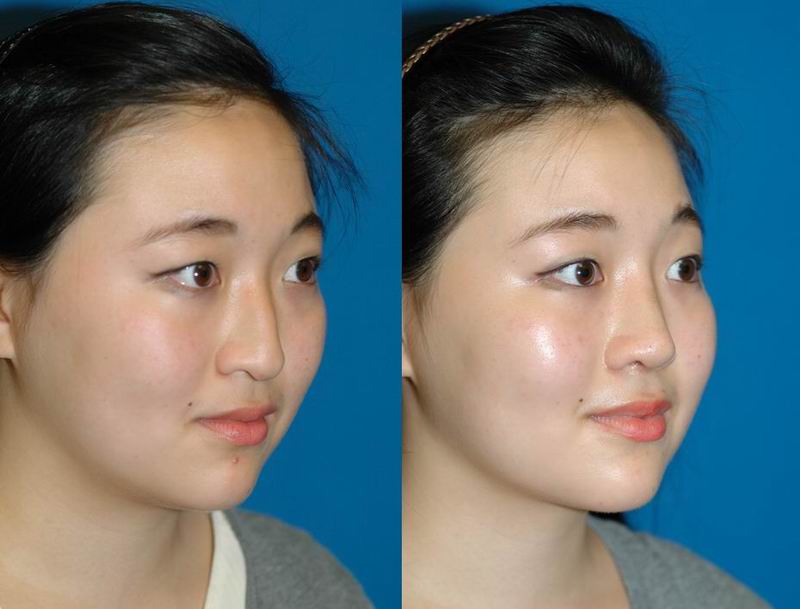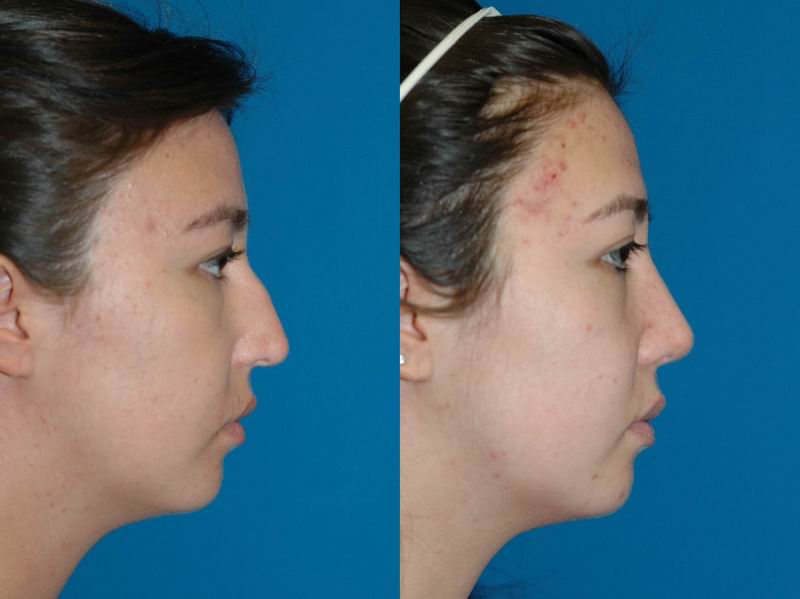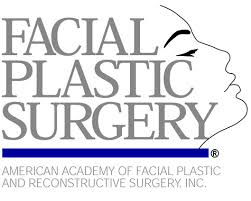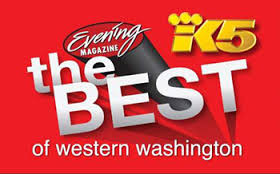Asian Rhinoplasty
Asian rhinoplasty is different than the type of rhinoplasty typically performed on Caucasian patients for a number of reasons. With few exceptions, Asians generally require augmentation of the nose (building up the structural support of the bridge and tip) to achieve a pleasing and natural cosmetic result, in contrast to Caucasian patients who generally require reduction of the bridge of their nose. The goal of Asian rhinoplasty is to create an attractive Asian nose, but not to create an attractive Caucasian nose on an Asian face.
The Bridge in Asian Rhinoplasty
One of the common features of many Asian noses is a low, flat bridge which lacks definition. This low bridge creates an unfavorable profile where the upper half of the nose looks too weak relative to the tip of the nose. On the front view of the Asian nose, the lack of height on the bridge results in poor definition of the nose. The flat bridge does not cast the ideal shadows necessary to define the side walls of the nose. There are 3 options for augmenting the nasal bridge in Asian rhinoplasty:
- Non-surgical bridge augmentation using injectable fillers
- Surgical augmentation using silicone or Gore-Tex implants
- Surgical augmentation using cartilage grafts
Injections can work well in patients needing a small amount of augmentation but results are short lasting and there is some risk of vascular problems (i.e. the filler being injecting into a blood vessel that may damage nasal tissues and skin). Synthetic nasal implants are used very frequently in Asia and produce good results but up to 19% of implants become infected and either extrude (work themselves out through the skin) or have to be surgically removed.
Cartilage grafts vs. Synthetic Implants
Dr. Naficy prefers using your own cartilage to augment the bridge. If only a small degree of augmentation is needed, he can use cartilage from the nasal septum and/or the ear. For more significant augmentation, he will utilize cartilage from the rib. Using the patient's own cartilage significantly reduces the risk of extrusion and infection. MTF Biologics costal cartilage grafts are human donor rib cartilage which can also be used in Asian rhinoplasty for patients who do not want to use their own rib cartilage.
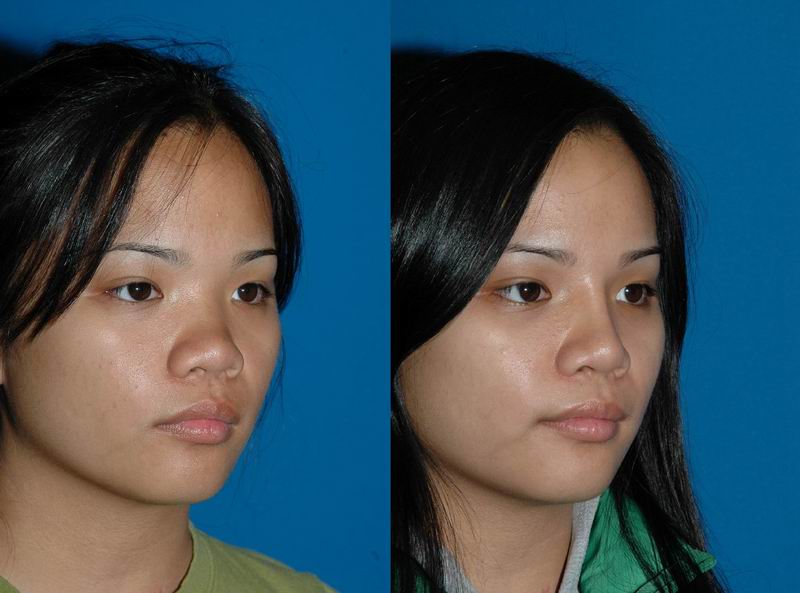
Asian Rhinoplasty using rib cartilage graft by Seattle facial plastic surgeon Dr. Sam Naficy. * Individual results may vary.
The Tip in Asian Rhinoplasty
Asian noses tend to have weaker cartilages in the tip as well as thicker skin. This often results in tips that lack definition and tend to droop more. The common techniques of tip rhinoplasty used in Caucasian patients (trimming of cartilage and suturing of cartilage) don't work in Asian rhinopalsty. Instead, Dr. Naficy uses Asian rhinopasty techniques which create tip support and make the tip taller and thus narrower.
Asian Rhinoplasty by Seattle facial plastic surgeon Dr. Sam Naficy. * Individual results may vary.
Dr. Naficy's practice has been 100% devoted to rhinoplasty and facial plastic surgery for the past 18 years. This is why Seattle doctors and patients have voted Dr. Naficy one of the top plastic surgeons for the face. Patients from the entire globe seek Dr. Naficy's expertise and he has many patients flying in for surgery both nationally and internationally.
What to do if you have an infected nasal implant
If you have a silicone implant (plastic implant or other synthetic implant) inside your nose and have experiened sign of infection (redness, swelling, pain, drainage) or extrusion (the implant working itself out through the skin), then it is time for the implant to be removed. Once we surgically remove the implant and your nose has healed, after a number of months, there is the option of rebuilding the nose using your own cartilage.
Asian Rhinoplasty Photos
These are representative before and after images of Asian rhinoplasty procedures performed by Dr. Sam Naficy. All Asian rhinoplasty and other facial plastic surgery procedures were performed by Dr. Sam Naficy. All images are copyrighted.

Asian Rhinoplasty with rib cartilage graft by Seattle facial plastic surgeon Dr. Sam Naficy. * Individual results may vary.

Asian Rhinoplasty with septal cartilage graft by Seattle facial plastic surgeon Dr. Sam Naficy. * Individual results may vary.
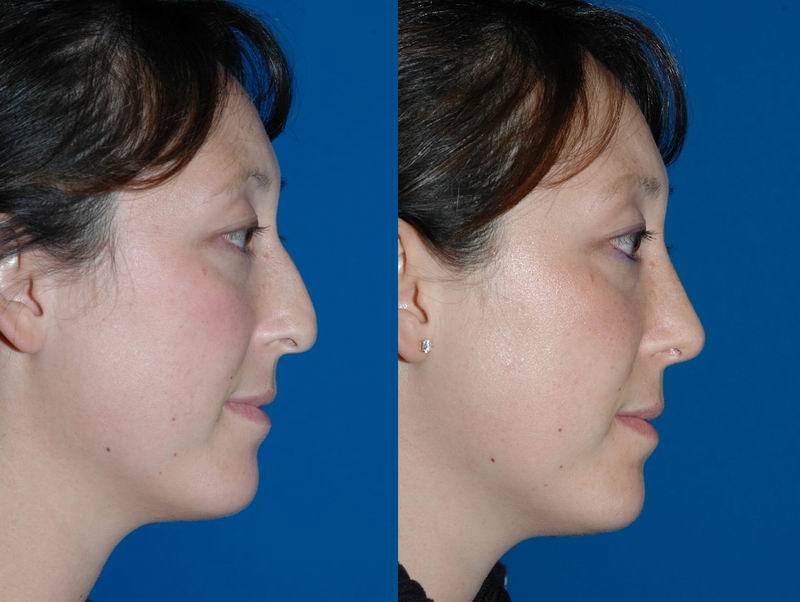
Asian Rhinoplasty with septal cartilage graft by Seattle facial plastic surgeon Dr. Sam Naficy. * Individual results may vary.
Asian Rhinoplasty with septal cartilage graft by Seattle facial plastic surgeon Dr. Sam Naficy. * Individual results may vary.
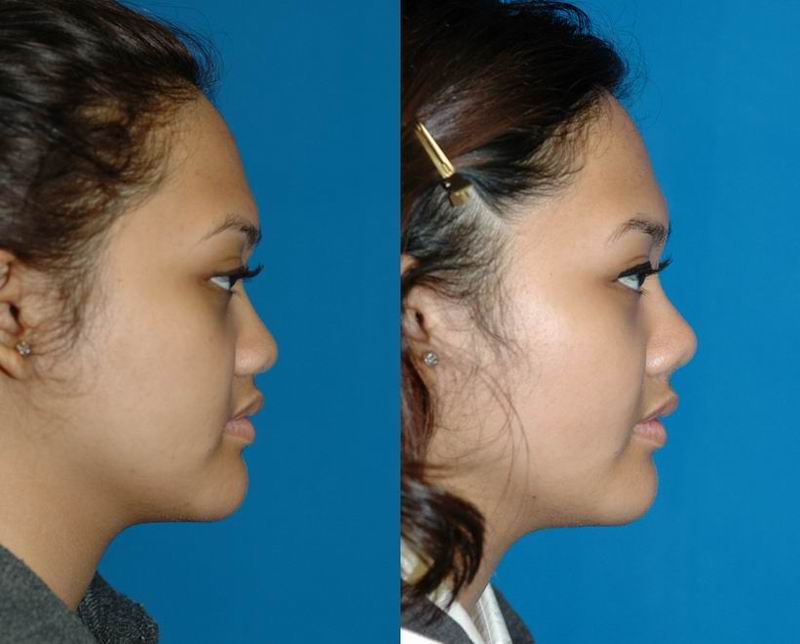
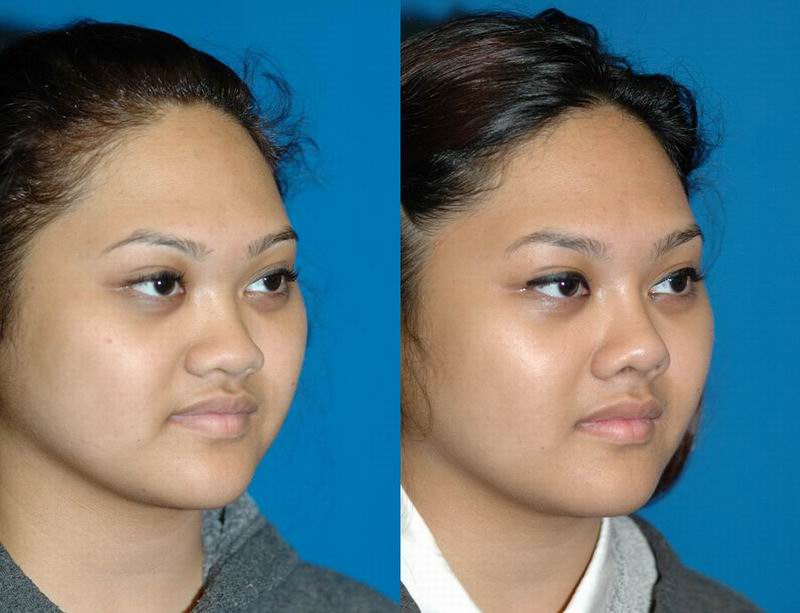
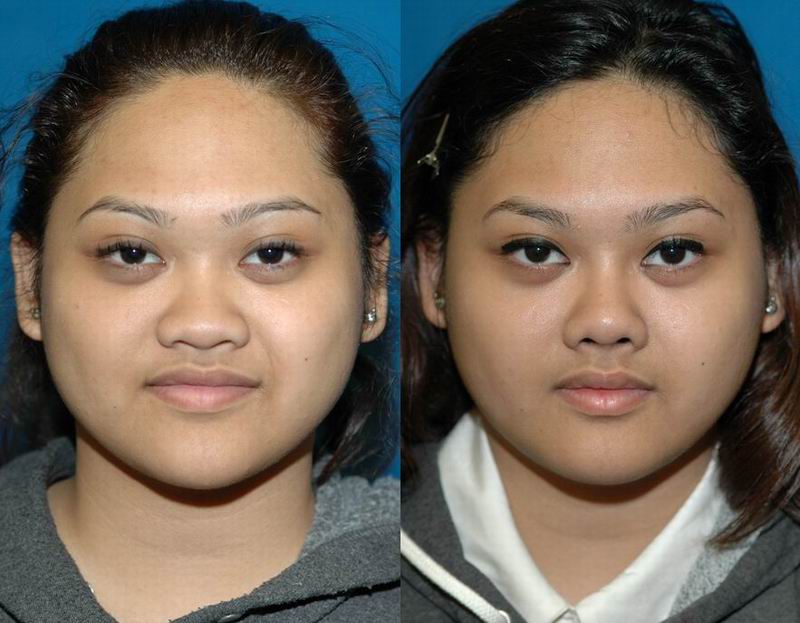
Asian Rhinoplasty with rib cartilage graft by Seattle facial plastic surgeon Dr. Sam Naficy. * Individual results may vary.
What Type of Anesthesia is Used?
A number of anesthesia options are available and your anesthesia provider will discuss with you which one is most appropriate for your health status and procedure. Some procedures require general anesthesia, while others may be done with IV sedation. With either, your heart rate, blood pressure, breathing and oxygen levels are monitored continuously by your anesthesia provider.
General anesthesia means that you are completely asleep for surgery and the placement of an intravenous line and a breathing tube is required. Frequently, numbing medication is also placed during surgery by your surgeon.
IV sedation is also called “monitored anesthesia care” or MAC. This involves receiving sedation and pain medication through an intravenous line (IV). At the beginning of the procedure, when you will be the sleepiest, your surgeon will be placing numbing medication in the area of the surgery. Once the area is numb you will require less sedation and pain medication but you will continue to receive enough medication to keep you sedated and comfortable during the entire procedure. During your surgery you may be receiving oxygen. Airway devices may be placed during IV sedation to keep you breathing normally.
Anesthesia guidelines [21kb PDF]
What is the recovery like?
A tape dressing will cover the nose for one week. With modern techniques employed by Dr. Naficy, no packing is required inside the nose. There may be some discoloration and swelling around the eyes which will improve over time. One week is usually enough time for returning to work and social activities although individual healing times may vary.
Post-operative care instructions [18kb PDF]
Contact us to explore further:
If you are considering this procedure we encourage you to complete this Surgical Consultation Intake Form. There is a great variety in nose shapes and features and each procedure must be custom tailored for the patient to get the best possible result. Dr. Naficy will tell you whether you are a suitable candidate for this procedure and inform you of the potential risks of the procedure.


